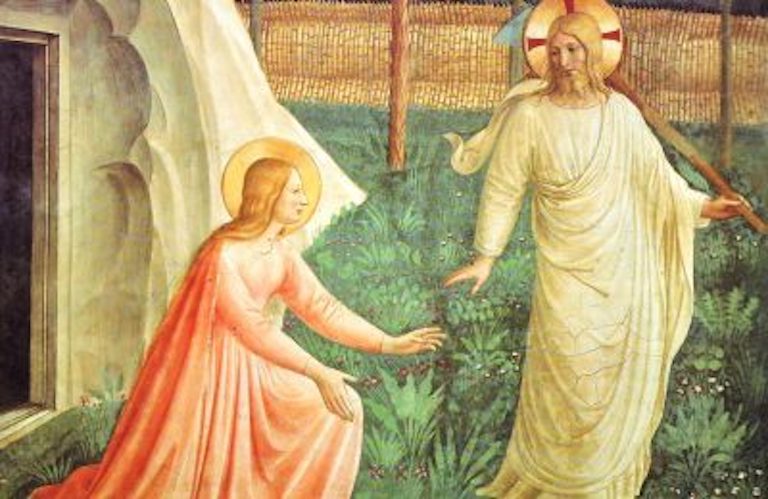How Will I Recognize?
I’ve often been a little mystified that Mary of Magdala and other disciples had such a difficult time recognizing the risen Christ. But then, I have never seen somebody I knew beyond a doubt to be dead standing in the garden next to their grave site or joining me for a long walk home. If I saw my friend Rita, for instance, whose relatives I sat with during her burial service, it would take me a good, long while to believe that it was really her. And then I’d want to know how. How did it happen? And, maybe later, I’d want to know why.
As a portrait artist I know how one little stroke of a brush, one little line, can make the difference in an image being recognizable as a particular person. Shadow that line beside the mouth just a bit too much or too little, or crook the eyebrow just slightly differently, and you have a different person on your canvas. So maybe there was something in the experience of death and rebirth that changed Jesus’ countenance. Perhaps that was why he went unrecognized.
Or perhaps his resurrection was just so completely unexpected – and unimaginable – that Jesus literally could not be seen. It took him saying a familiar word or breaking bread in a way that was uniquely his for the disciples to recognize him.
This makes me ponder what we call the Easter moment. In all our Easters isn’t there that element of the unexpected? Perhaps it is that I wanted to be reinstated to a position from which I’d been wrongfully dismissed. Instead, a new job comes along, one closer to my particular skill set. Or my house burned down and I prayed for the money to rebuild. Instead, I find myself nourished by the community in the neighborhood in which I am temporarily renting. The book that falls off the bookstore shelf into our hands, the acquaintance who we haven’t seen in ages who just happens to have information we need – it’s all unexpected.
And, if you think about it, it has to be this way in order to be a resurrection. We have to have suffered bitter anguish, to have grieved and been furious, to have really experienced a full-stop death, in order for there to be fertile ground for resurrection. There’s the bleakness, the no-hope, the end of plans and dreams. Only after we have reached that bed-rock moment does resurrection occur.
The old is never reinstated, though. When something is resurrected, it is changed. Mary of Magdala, standing in the garden, will still need to grieve the death of her friend, Jesus. The person who comes back to her from the grave is not him. It is the Christ.
Where is the resurrected Christ in my garden today? Where is he on my long walk across the countryside from the crucifixion toward home? Which stranger standing next to me is uttering his words of eternal life? How will I recognize him?

